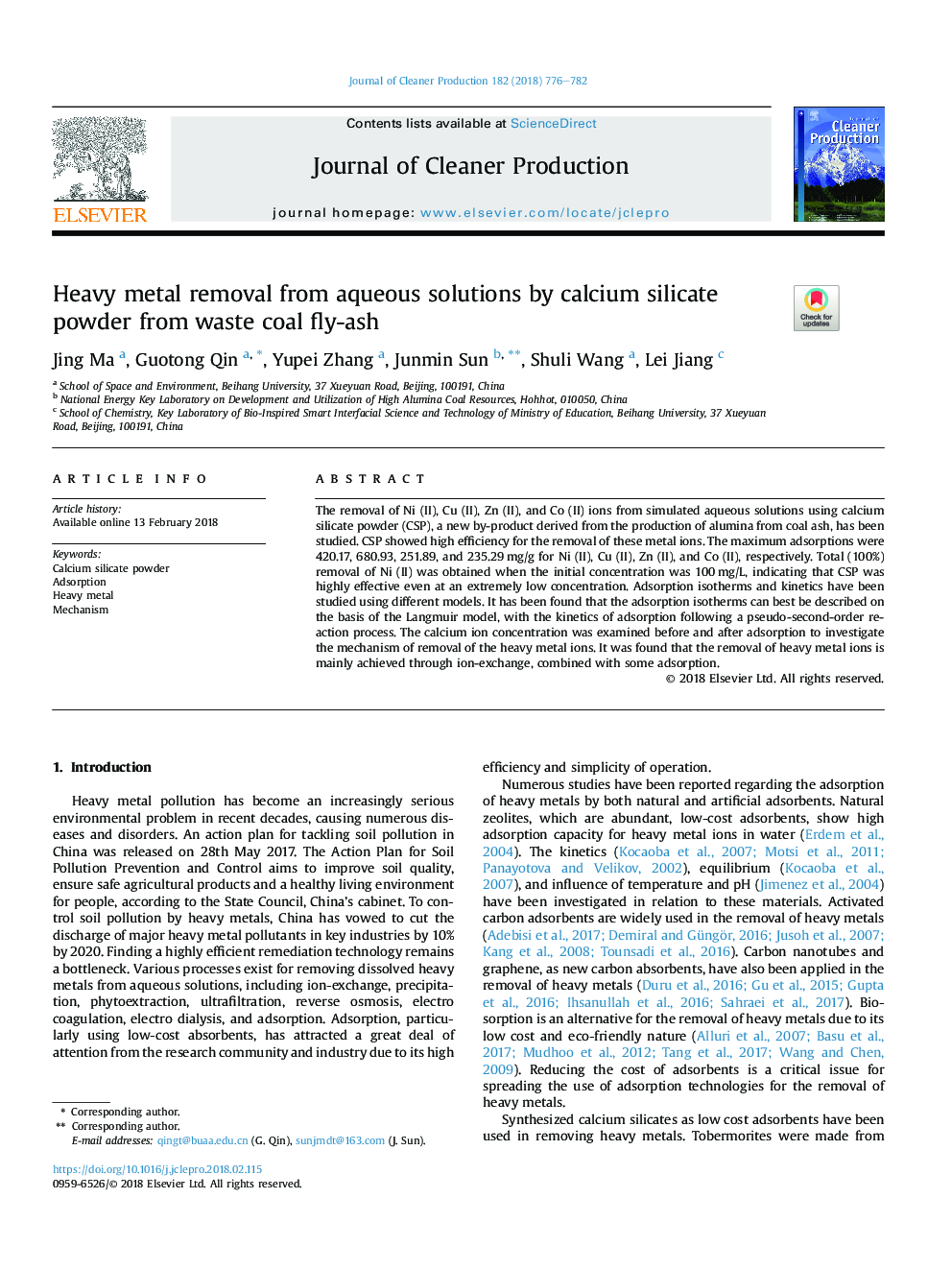| Article ID | Journal | Published Year | Pages | File Type |
|---|---|---|---|---|
| 8097448 | Journal of Cleaner Production | 2018 | 7 Pages |
Abstract
The removal of Ni (II), Cu (II), Zn (II), and Co (II) ions from simulated aqueous solutions using calcium silicate powder (CSP), a new by-product derived from the production of alumina from coal ash, has been studied. CSP showed high efficiency for the removal of these metal ions. The maximum adsorptions were 420.17, 680.93, 251.89, and 235.29â¯mg/g for Ni (II), Cu (II), Zn (II), and Co (II), respectively. Total (100%) removal of Ni (II) was obtained when the initial concentration was 100â¯mg/L, indicating that CSP was highly effective even at an extremely low concentration. Adsorption isotherms and kinetics have been studied using different models. It has been found that the adsorption isotherms can best be described on the basis of the Langmuir model, with the kinetics of adsorption following a pseudo-second-order reaction process. The calcium ion concentration was examined before and after adsorption to investigate the mechanism of removal of the heavy metal ions. It was found that the removal of heavy metal ions is mainly achieved through ion-exchange, combined with some adsorption.
Keywords
Related Topics
Physical Sciences and Engineering
Energy
Renewable Energy, Sustainability and the Environment
Authors
Jing Ma, Guotong Qin, Yupei Zhang, Junmin Sun, Shuli Wang, Lei Jiang,
